Leading the way to innovation
For 40 years, Medtronic has committed to transforming diabetes care.
Feel empowered to live your life fully with the choice of innovative solutions.
Easier
Smarter
Convenient
A history of firsts. A future of innovation.
Our smallest CGM yet
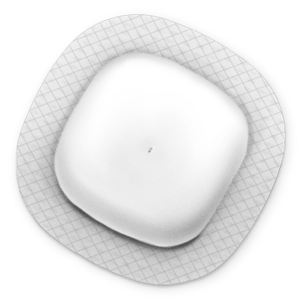
Meal DetectionTM technology
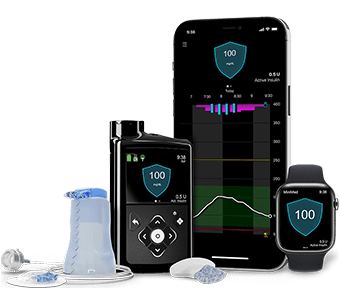
Medtronic ExtendedTM infusion set
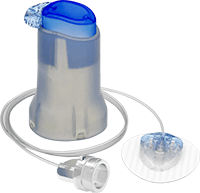
Smart insulin pen with CGM
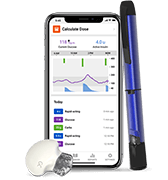
Insulin pump for kids
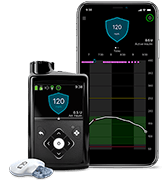
Continuous glucose monitor
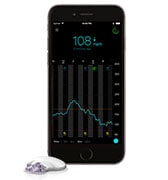
Hybrid closed-loop insulin pump
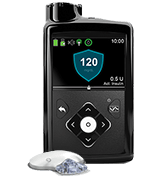
Smart insulin pen
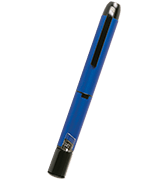
Predictive algorithmΦ
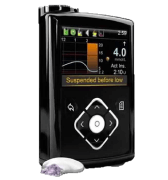
Technology to help reduce severe lows
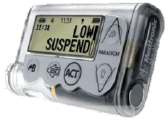
Insulin pump and CGM system
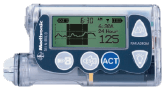
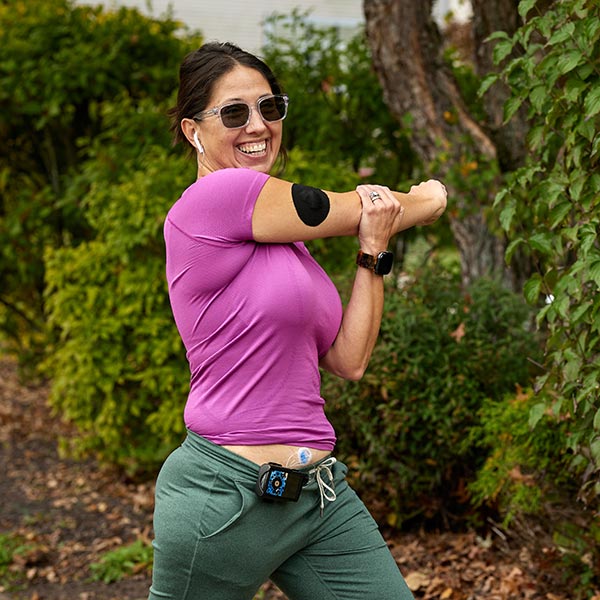
Planned future product innovations
All referenced product innovations are in development or still being designed. Such innovations are not FDA-approved and will require FDA review prior to such approval.
Enhanced sensor
technology††

Smarter
CGM††

Combined CGM &
infusion set††

Personalized insulin
delivery††

References
§ Refers to SmartGuard™ technology. Some user interaction required. Individual results may vary.
* Smart CGM predicts future high and low sensor glucose events up to 60 minutes in advance.
Δ Smart insulin pens connect to a mobile app to provide dosing calculations, reminders and CGM system integration.
** Taking a bolus 15 – 20 min before a meal helps to keep blood sugar levels under control after eating.
† Refers to auto correct, which provides bolus assistance. Can deliver all correction doses automatically without user interaction, feature can be turned on and off.
†† In development. Potential future technology. Not approved by the FDA and not commercially available. The innovations described above are all currently in development. Features and performances of future technologies may vary. Access to future technologies are contingent upon regulatory approval. Approval timelines are subject to the regulatory process of individual countries and regions and not guaranteed.
Important Safety Information
Important safety information: MiniMed™ 780G system with SmartGuard™ technology with Guardian™ 4 sensorThe MiniMed™ 780G system is intended for continuous delivery of basal insulin at selectable rates, and the administration of insulin boluses at selectable amounts for the management of type 1 diabetes mellitus in persons seven years of age and older requiring insulin as well as for the continuous monitoring and trending of glucose levels in the fluid under the skin. The MiniMed™ 780G system includes SmartGuard™ technology, which can be programmed to automatically adjust insulin delivery based on the continuous glucose monitoring (CGM) sensor glucose values and can suspend delivery of insulin when the sensor glucose (SG) value falls below or is predicted to fall below predefined threshold values.
The Medtronic MiniMed™ 780G system consists of the following devices: MiniMed™ 780G insulin pump, the Guardian™ 4 transmitter, the Guardian™ 4 sensor, One-press serter, the Accu-Chek™ Guide Link blood glucose meter, and the Accu-Chek™ Guide test strips. The system requires a prescription from a healthcare professional.
The Guardian™ 4 sensor is intended for use with the MiniMed™ 780G system and the Guardian 4 transmitter to monitor glucose levels for the management of diabetes. The sensor is intended for single use and requires a prescription. The Guardian™ 4 sensor is indicated for up to seven days of continuous use.
The Guardian™ 4 sensor is not intended to be used directly to make therapy adjustments while the MiniMed™ 780G is operating in manual mode. All therapy adjustments in manual mode should be based on measurements obtained using a blood glucose meter and not on values provided by the Guardian™ 4 sensor. The Guardian™ 4 sensor has been studied and is approved for use in patients ages 7 years and older and in the arm insertion site only. Do not use the Guardian™ 4 sensor in the abdomen or other body sites including the buttocks, due to unknown or different performance that could result in hypoglycemia or hyperglycemia.
WARNING: Do not use the SmartGuard™ feature for people who require less than 8 units or more than 250 units of total daily insulin per day. A total daily dose of at least 8 units, but no more than 250 units, is required to operate in the SmartGuard™ feature.
WARNING: Do not use the MiniMed™ 780G system until appropriate training has been received from a healthcare professional. Training is essential to ensure the safe use of the MiniMed™ 780G system.
WARNING: Do not use SG values to make treatment decisions, including delivering a bolus, while the pump is in Manual Mode. When the SmartGuard™ feature is active and you are no longer in Manual Mode, the pump uses an SG value, when available, to calculate a bolus amount. However, if your symptoms do not match the SG value, use a BG meter to confirm the SG value. Failure to confirm glucose levels when your symptoms do not match the SG value can result in the infusion of too much or too little insulin, which may cause hypoglycemia or hyperglycemia.
Pump therapy is not recommended for people whose vision or hearing does not allow for the recognition of pump signals, alerts, or alarms. The safety of the MiniMed™ 780G system has not been studied in pregnant women, persons with type 2 diabetes, or in persons using other anti-hyperglycemic therapies that do not include insulin. For complete details of the system, including product and important safety information such as indications, contraindications, warnings and precautions associated with system and its components, please consult https://www.medtronicdiabetes.com/important-safety-information#minimed-780g and the appropriate user guide at https://www.medtronicdiabetes.com/download-library
Important Safety Information: MiniMed™ 770G System With SmartGuard™ Technology
The MiniMed™ 770G system is intended for continuous delivery of basal insulin (at user selectable rates) and administration of insulin boluses (in user selectable amounts) for the management of type 1 diabetes mellitus in persons two years of age and older requiring insulin as well as for the continuous monitoring and trending of glucose levels in the fluid under the skin. The MiniMed™ 770G System includes SmartGuard™ technology, which can be programmed to automatically adjust delivery of basal insulin based on continuous glucose monitoring (CGM) sensor glucose values and can suspend delivery of insulin when the SG value falls below or is predicted to fall below predefined threshold values. The Medtronic MiniMed™ 770G System consists of the following devices: MiniMed™ 770G Insulin Pump, the Guardian™ Link (3) Transmitter, the Guardian™ Sensor (3), one-press serter, the Accu-Chek® Guide Link blood glucose meter, and the Accu-Chek® Guide Test Strips. The system requires a prescription.The Guardian™ Sensor (3) has not been evaluated and is not intended to be used directly for making therapy adjustments, but rather to provide an indication of when a fingerstick may be required. All therapy adjustments should be based on measurements obtained using a blood glucose meter and not on values provided by the Guardian™ Sensor (3).
All therapy adjustments should be based on measurements obtained using the Accu-Chek® Guide Link blood glucose meter and not on values provided by the Guardian™ Sensor (3). Always check the pump display to ensure the glucose result shown agrees with the glucose results shown on the Accu-Chek® Guide Link blood glucose meter. Do not calibrate your CGM device or calculate a bolus using a blood glucose meter result taken from an Alternative Site. It is not recommended to calibrate your CGM device when sensor or blood glucose values are changing rapidly, e.g., following a meal or physical exercise.
WARNING: Do not use the SmartGuard™ Auto Mode for people who require less than eight units or more than 250 units of total daily insulin per day. A total daily dose of at least eight units, but no more than 250 units, is required to operate in SmartGuard™ Auto Mode.
WARNING: Do not use the MiniMed™ 770G system until appropriate training has been received from a healthcare professional. Training is essential to ensure the safe use of the MiniMed™ 770G system.
Pump therapy is not recommended for people whose vision or hearing does not allow recognition of pump signals and alarms. Pump therapy is not recommended for people who are unwilling or unable to maintain contact with their healthcare professional. The safety of the MiniMed™ 770G system has not been studied in pregnant women. For complete details of the system, including product and important safety information such as indications, contraindications, warnings and precautions associated with system and its components, please consult https://www.medtronicdiabetes.com/important-safety-information#minimed-770g and the appropriate user guide at http://www.medtronicdiabetes.com/download-library
Important Safety Information: InPen™
The InPen requires a prescription. It is a home-use reusable pen injector for single-patient use by people with diabetes under the supervision of an adult caregiver, or by a patient age 7 and older for the self-injection of a desired dose of insulin. The pen injector is compatible with Lilly Humalog® U-100 3.0 mL cartridges, Novo Nordisk Novolog® U-100 3.0 mL cartridges, and Novo Nordisk Fiasp® U-100 3.0 mL cartridges and single-use detachable and disposable pen needles (not included). The pen injector allows the user to dial the desired dose from 0.5 to 30 units in one-half (1/2) unit increments.
The InPen dose calculator, a component of the InPen app, is indicated for the management of diabetes by people with diabetes under the supervision of an adult caregiver, or by a patient age 7 and older for calculating an insulin dose or carbohydrate intake based on user entered data.
For an insulin dose based on amount of carbohydrates, a healthcare professional must provide patient-specific target blood glucose, insulin-to-carbohydrate ratio, and insulin sensitivity parameters to be programmed into the software prior to use.
For an insulin dose based on fixed/variable meal sizes, a healthcare professional must provide patient-specific fixed doses/meal sizes to be programmed into the software prior to use.
For additional product and important safety considerations, see User Guide and http://bit.ly/InPenSafety.
Important Safety Information: Extended Wear Infusion Set (EIS)
The Extended Infusion Set is indicated for up to 7 days of wear for the subcutaneous infusion of insulin from an infusion pump. It is NOT indicated for intravenous (IV) infusion or the infusion of blood or blood products. Inaccurate medication delivery, infection and/or site irritation may result from improper insertion and maintenance of the infusion site. Before insertion, clean the insertion site with isopropyl alcohol. Remove the needle guard before inserting the infusion set. If using this infusion set for the first time, do the first set-up in the presence of your healthcare professional. Do not leave air in the infusion set. Prime completely. Check frequently to make sure the soft cannula remains firmly in place as you may not feel pain if it pulls out. The soft cannula must always be completely inserted to receive the full amount of medication. If the infusion site becomes inflamed, replace the set, and use a new site until the first site has healed. Replace the infusion set if the tape becomes loose, or if the soft cannula becomes fully or partially dislodged from the skin. Regularly replace the infusion set as indicated in the instructions for use, or per the insulin labeling, whichever duration is shorter.


